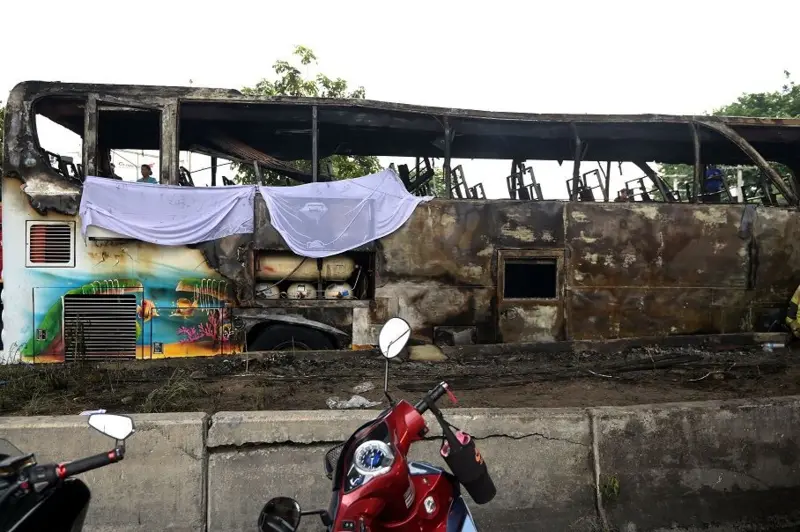
The tragic Uthai Thani school bus fire that occurred on September 30, 2024, resulted in the loss of 23 lives, including both students and teachers. Experts have identified several contributing factors that worsened this incident, highlighting the systemic issues in safety regulations for public transportation in Thailand.
1. Old and Unsafe Bus Used for Transport
One major factor in the Uthai Thani school bus fire was the fact that the bus was 54 years old, far beyond the recommended lifespan of public transport vehicles. Aging buses with worn-out parts are more prone to malfunctions that can lead to disasters.
2. Excessive NGV Tanks Installed Illegally
The bus had 11 NGV gas tanks, despite only 6 being officially approved. This excess, which did not meet safety regulations, contributed to the gas leak that played a significant role in the Uthai Thani bus fire.
3. Emergency Exit Failures and Lack of Safety Equipment
Rescue workers noted that the emergency exits on the bus were blocked, preventing the passengers from escaping the fire. Additionally, the bus lacked essential safety tools like glass-breaking hammers, which could have helped passengers flee through the windows during the fire.
4. Rapid Spread of Fire Due to Gas Leak
Investigations confirmed that the fire spread rapidly due to a gas leak from the NGV tanks. The flammable materials inside the bus, combined with the gas leak, accelerated the fire and left passengers with little time to react.
5. Lack of School Regulation on Vehicle and Driver Safety
Schools need more stringent guidelines when selecting vehicles for trips. In the case of the Uthai Thani school bus fire, the vehicle did not meet modern safety standards, and the driver was not properly trained to manage emergency situations, contributing to the severity of the incident.
External Link:
Learn more about this tragic incident at BBC’s full report.
Internal Link:
Explore related transportation safety articles on https://kenkou-land.com.





